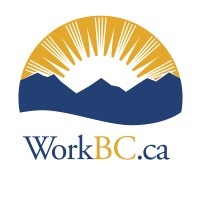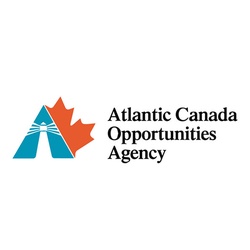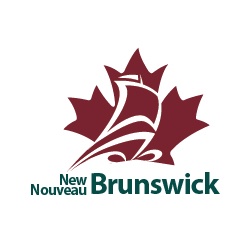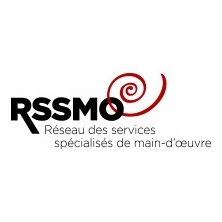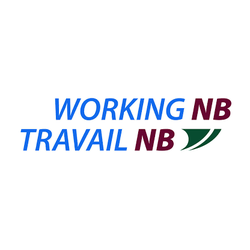Canada’s social economy plays a significant role in society and the economy – for instance, over 170,000 non-profits and charities operate nationally, employing millions of Canadians and contributing around 8% of the country’s GDP. In provinces like Quebec, the social economy is especially robust: as of 2022, Quebec had more than 11,000 social economy enterprises providing work for roughly 250,000 people. These organizations tackle pressing issues such as poverty, social inclusion, environmental sustainability, and community development.
For social economy organizations to thrive and expand their impact, access to funding is crucial. Grants and funding for social economy organizations in Canada come from a mix of sources, including government programs at the federal, provincial, and municipal levels, as well as private foundations, community funds, and social finance investors. This article provides an overview of the funding landscape for Canada’s social economy sector – covering common funding types (like grants, contributions, and social finance), key federal initiatives (such as the Social Finance Fund), examples of provincial and city-level support, and guidance on how to apply for funding. Whether you run a non-profit, a cooperative, or a social enterprise, understanding these funding avenues can help sustain your mission and grow your impact.
Overview of Common Funding Types for Social Purpose Organizations
Social purpose organizations in Canada often rely on a combination of funding types to support their programs and ventures. The major categories include grants, contributions, repayable vs. non-repayable funds, and social impact investments. Each type has distinct characteristics and implications for the recipient organization:
Grants: A grant is a sum of money provided to an organization (or sometimes an individual project) that does not need to be repaid, as long as the funds are used as intended. Grants are typically the most flexible and coveted form of funding because they represent non-repayable capital with relatively few strings attached. They usually come from government agencies, public or private foundations, and charitable funders. In Canada, grants for social enterprises or non-profits can support a wide range of activities – from launching a new program or service to scaling up operations or covering operational costs. Importantly, even though grants are non-repayable, recipients are often required to meet certain eligibility criteria and report on the outcomes or impacts achieved with the funds.
Contributions: In government funding terminology, a contribution is similar to a grant in that it is a transfer payment to support a project, but it comes with more conditions and oversight. Contribution funding is usually provided through a formal agreement that specifies how the money can be spent and what results must be achieved. Organizations typically receive contribution funds as reimbursements for eligible expenses rather than as an upfront lump sum. There are ongoing reporting requirements during the project, and the funding agency closely monitors progress. In some cases, if the project underperforms or funds are unspent, the recipient may need to return a portion of the contribution. Contributions are common in federal and provincial funding programs targeting social development, where accountability for outcomes is important.
Repayable vs. Non-Repayable Funds: Both grants and contributions can be structured as non-repayable (the norm, meaning the money is effectively a gift or subsidy) or occasionally repayable. A repayable contribution or repayable grant functions more like an interest-free loan – the organization might be expected to pay back the funds under certain conditions, such as if the project generates a surplus or profit above a threshold. In practice, most nonprofit funding in Canada is non-repayable unless explicitly offered as a loan. However, some government economic development programs for social enterprises or community businesses use repayable financing to encourage sustainability. It’s essential for organizations to read the terms of any funding agreement to know if repayment could be required. Separately, there are also loans available to social enterprises (for example, through social finance programs or credit unions), but these are not grants at all – loans must be repaid with or without interest, as specified.
Social Impact Investments: Beyond grants and contributions, social economy organizations are increasingly turning to social finance and impact investment as funding avenues. Social impact investments are funds provided by investors who expect both a social/environmental impact and a financial return. These can take the form of low-interest loans, equity investments in a social enterprise, community bonds, or other innovative financing tools. In Canada, impact investment has grown significantly in recent years, with funds from foundations, credit unions, impact investment firms, and government-backed initiatives being channeled into social purpose projects. For example, a social enterprise might secure an impact investment loan from a community fund to expand its operations, promising to repay the capital over time from its revenue, while the investor gains the satisfaction of furthering a social good (and possibly earning modest interest). Social impact investing is often facilitated by intermediaries such as social finance organizations and community loan funds. This type of funding is repayable by nature (since it’s an investment), but it expands the pool of capital available to social purpose businesses beyond traditional grants.
In summary, social economy business funding in Canada can come in many forms. Non-profits and charities often seek grants or contributions to fund programs, whereas social enterprises and co-ops might blend grants with revenue and impact investments. Understanding these funding types helps organizations plan their financing mix — for instance, using grants for early-stage or pilot projects, and social finance for scaling proven models. Next, we’ll explore the major sources of such funding, starting with federal government support.
Federal Programs and Support for Social Economy Funding
The Government of Canada recognizes the importance of the social economy and has developed funding programs and strategies to bolster this sector. Social enterprises, non-profits, and other social purpose organizations can tap into various federal-level programs and support. Key federal initiatives include the Social Finance Fund, Innovation Canada programs, and funding opportunities through departments like Employment and Social Development Canada (ESDC), among others.
Social Finance Fund (SFF)
One of the most significant recent federal initiatives is the Social Finance Fund (SFF). The SFF is a long-term, $755 million program created to accelerate the growth of Canada’s social finance market and improve access to capital for social purpose organizations. Launched in 2023 as a cornerstone of the government’s Social Innovation and Social Finance Strategy, the Social Finance Fund provides affordable, repayable financing to charities, non-profits, co-operatives, and social enterprises across the country. Rather than giving out grants, the SFF makes investment capital available (often in the form of loans or equity investments) through specialized fund managers known as social finance intermediaries.
The federal government has selected three fund managers to deploy the Social Finance Fund’s capital over the first five years (2023–2027), with a mandate to invest up to $400 million in total during that period. These fund managers include partnerships and organizations experienced in impact investing and the social economy, and they are responsible for financing eligible projects and enterprises in communities nationwide. For example, one of the fund managers serves the anglophone market, another focuses on projects in particular sectors or regions, and a third (CAP Finance in Quebec) is dedicated to Quebec’s social economy ecosystem. The Social Finance Fund’s model is to blend public and private investment: by providing seed capital and taking on some risk, the SFF encourages private investors to co-invest, thereby leveraging additional funds for greater social impact. Over its full horizon (scheduled to run until 2039), the Social Finance Fund aims to strengthen Canada’s impact investment ecosystem, enabling social purpose organizations to grow and innovate while delivering positive social and environmental outcomes.
For social economy organizations, the SFF represents a new opportunity to obtain social finance funding in Canada. If your organization has revenue-generating activities or a plan for financial sustainability, you could benefit from these kinds of impact investments. Often, you would access SFF funding indirectly by working with one of the social finance intermediaries or community investment funds that receive capital from the Fund. This federal initiative underscores a broader shift: rather than relying solely on grants, Canadian social enterprises can now pursue impact investment Canada opportunities with government support to scale up their solutions to social challenges.
Employment and Social Development Canada (ESDC) Programs
Employment and Social Development Canada is the federal department that leads many social programs, and it has been at the forefront of supporting the social economy. Apart from overseeing the Social Finance Fund, ESDC has offered various grants and contributions programs targeted at social development goals. One notable example was the Investment Readiness Program (IRP), which ran from 2019 to 2023. The IRP was a capacity-building grant program that helped social purpose organizations become “investment-ready.” Through the IRP, the Government of Canada invested $50 million in a pilot phase (2019–2021) and another $50 million in a renewal (2021–2023), supporting over a thousand social purpose projects across the country. Non-profits, charities, co-ops, and social enterprises received small grants (often ranging from $10,000 up to $100,000) to develop business plans, market strategies, impact measurement tools, and other foundational capacities that would enable them to secure investment or grow their impact. While the IRP has now concluded (with all funds disbursed), it left a stronger social finance ecosystem in its wake. Organizations that benefited from IRP grants are better positioned to take on loans or investments via initiatives like the Social Finance Fund or other investors.
Beyond these flagship programs, ESDC and other federal departments continue to provide funding opportunities that social economy organizations can access. These typically come in the form of calls for proposals or ongoing grant streams in specific issue areas. For example, ESDC’s Social Development Partnerships Program offers grants for projects that support children and families, the inclusion of persons with disabilities, and other social development priorities. Similarly, the New Horizons for Seniors Program provides grants to community organizations addressing senior well-being. There are also federal funds for areas like homelessness (e.g., the Reaching Home program), skills training and employment social enterprises, accessibility improvements, and poverty reduction initiatives. While each program has its own objectives and eligibility criteria, collectively they represent significant nonprofit funding in Canada at the federal level. Social economy organizations should monitor the Canada.ca website and ESDC announcements for these funding opportunities, as they often have application windows for proposals.
Innovation Canada and Other Federal Supports
Social enterprises and social entrepreneurs can also benefit from broader federal business and innovation supports. Innovation Canada is a federal platform that serves as a one-stop shop to help businesses (including social-purpose businesses) find applicable funding programs, advisory services, or tax credits. By answering a few questions on the Innovation Canada web portal, organizations can get a tailored list of federal and provincial programs they may be eligible for – ranging from grants and loans to mentorship and accelerators. Many social enterprises that operate as small businesses or start-ups may qualify for innovation and entrepreneurship funding. For instance, if a social enterprise is developing a new clean technology or a social innovation, it might access research grants from Innovation, Science and Economic Development (ISED) Canada or funding from programs like the Sustainable Development Goals Funding Program. Similarly, if a co-operative or Indigenous social enterprise is looking to grow in a specific region, regional development agencies (such as Western Economic Diversification (PrairiesCan), FedNor, or Atlantic Canada Opportunities Agency) sometimes offer contributions or loans that could apply.
Another federal support mechanism is indirect: the Government of Canada often funds national intermediaries and networks that in turn support social economy organizations. For example, Community Foundations of Canada and national charities have been conduits for federal funding in special programs. In 2023, the federal government rolled out the Community Services Recovery Fund (a one-time COVID-19 recovery initiative) in partnership with community foundations and other bodies, to provide grants to non-profits and charities recovering from the pandemic. While such programs are time-limited, they indicate that the federal level frequently injects funding into the sector through partnerships.
In summary, at the federal level in Canada, social economy organizations can access a mix of direct funding programs (like grants and contributions from departments) and strategic initiatives like the Social Finance Fund that bolster financing options. Keeping informed about federal funding is important because new opportunities – aligned with government priorities such as inclusive employment, climate action, or social innovation – can emerge with each federal budget or policy initiative.
Provincial and Municipal Support (Examples Across Canada)
Funding support for social economy organizations is not limited to Ottawa – provincial governments and even municipal authorities across Canada play a role in financing and nurturing the social economy. The landscape varies by province, as each has its own priorities and mechanisms for supporting non-profits, co-ops, and social enterprises. Here is an overview of provincial and municipal support, with a few examples:
Quebec: Quebec is often cited as a leader in the social economy. The provincial government has a dedicated action plan and funding envelope for the social economy (for instance, a recent 2025–2030 action plan commits over $140 million to support social enterprises and collective projects). Quebec’s approach includes support for sector infrastructure and financing tools. Notably, Quebec is home to specialized social finance intermediaries such as the Réseau d’investissement social du Québec (RISQ) and the Fiducie du Chantier de l’économie sociale (Chantier Social Economy Trust). These funds, supported by government and private investors, provide patient capital (low-interest loans and investments with flexible terms) to co-ops and non-profits launching or expanding ventures. In addition, the province works closely with networks like Le Chantier de l’économie sociale (a coordinating body for the social economy) to deliver capacity-building and seed funding. At a municipal level, cities in Quebec also encourage social economy projects; for example, Montreal integrates social economy enterprises into its economic development strategy and supports them through partnerships and social procurement (preferring to buy goods/services from social enterprises where possible).
Ontario: Ontario’s support for social economy organizations has included both funding and enabling programs. The Ontario Trillium Foundation (OTF) is a major provincial agency that provides grants to non-profits, charities, and in some cases social enterprises for community projects across Ontario. Through OTF’s grants, many social enterprises have received seed funding or capital to grow their initiatives in areas like youth empowerment, environmental sustainability, and active living. Ontario also piloted the Social Enterprise Demonstration Fund a few years ago, which provided $4 million through various community organizations to invest in early-stage social enterprises (this was a time-limited program demonstrating social finance concepts). Additionally, Ontario ministries sometimes offer targeted funding – for instance, funding for social enterprises creating employment for persons with disabilities, or community hubs, etc. On the municipal front, larger cities in Ontario have programs as well: the City of Toronto, for example, has offered grants for community economic development and runs a Social Procurement Program that helps social enterprises secure city contracts, indirectly boosting their revenue. Other cities like Ottawa and London have small business or social innovation incubators that provide grants or seed funding to local social-purpose projects.
Western Canada (Prairies and British Columbia): In Western provinces, support often comes through a combination of government and community initiatives. Alberta provides grant funding to non-profits through programs such as the Community Initiatives Program and Community Facility Enhancement Program, which many social service organizations utilize. Uniquely, Edmonton is home to the Social Enterprise Fund, which was created with support from the City of Edmonton and the Edmonton Community Foundation. The Social Enterprise Fund offers loans and patient capital to social enterprises and nonprofits across Alberta for projects that generate social and environmental benefits. This fund has financed initiatives ranging from affordable housing developments to employment-training businesses, illustrating a successful municipal-province-community collaboration in social finance. In British Columbia, the provincial government and local partners have focused on social innovation and entrepreneurship. While BC doesn’t have a single large fund for social enterprises, it was the first province to introduce a hybrid corporate form – the Community Contribution Company (C3) – to enable social enterprises to attract investment while locking in their social purpose. Funding for BC social economy groups often comes via community foundations (like Vancouver Foundation), socially-minded credit unions (like Vancity, which provides grants and impact loans), and provincial grant programs for community development or poverty reduction. Municipalities such as Vancouver have offered “social innovation” grants to non-profits tackling urban challenges, and they actively support social enterprises through initiatives like the Vancouver Social Value Procurement framework.
Atlantic Canada and the North: Smaller provinces have their own approaches. In Nova Scotia, a notable support mechanism is the Community Economic Development Investment Fund (CEDIF) program. CEDIFs allow community-based organizations to raise investments from local residents (with provincial tax credits as an incentive) and then invest that money into local businesses or social enterprises. This model has helped channel private capital into co-operatives, renewable energy projects, and community enterprises in Nova Scotia. The province also recognizes Community Interest Companies (CIC) – a structure similar to BC’s C3 – for social enterprises. Other Atlantic provinces and Northern territories largely rely on federal transfers and local grants for community projects, but we see examples like Newfoundland and Labrador’s government funding community sector organizations via agreements, or the Yukon supporting First Nation social enterprises through development corporations. Municipal governments in these regions, such as Halifax or St. John’s, may have grant programs for neighbourhood improvement, arts and culture, or social development that social economy organizations can access.
In all provinces, non-profit funding in Canada is also bolstered by philanthropy and local fundraising. Community foundations in almost every province provide grants to charities and social initiatives in their regions. Corporate donors and sponsorship programs (e.g., credit unions, banks with social impact funds, private companies with corporate social responsibility grants) form another piece of the puzzle, complementing government funding.
The key takeaway is that social economy organizations should explore provincial and municipal funding opportunities in addition to federal ones. Each province has unique programs or resources – whether it’s a well-established foundation like OTF in Ontario, a government partnership model like Quebec’s, or an innovative community investment scheme like Nova Scotia’s CEDIF. Connecting with provincial nonprofit networks or regional social enterprise councils can help uncover what support is available locally. And even at the city level, keeping an eye on your municipality’s community grant announcements or economic development office can lead to funding for smaller projects that make a big difference locally.
How to Apply for Funding: Eligibility, Documentation, and Evaluation
Securing grants and funding for a social purpose organization involves a careful application process. Understanding how to apply for funding is just as important as finding the opportunities. Generally, whether you are applying for a government grant or a foundation contribution, you will need to navigate eligibility rules, prepare documentation, and meet evaluation criteria. Here are key steps and considerations in the application process:
Ensure Eligibility: Before investing time in an application, double-check that your organization and project meet the funder’s eligibility requirements. Funding programs in Canada often specify the types of organizations that can apply – for example, registered charities, non-profit corporations, Indigenous organizations, or in some cases social enterprises with a business registration. Similarly, many grants are earmarked for certain purposes or beneficiary groups (e.g., a grant might target projects that help youth employment, environmental innovation, or poverty reduction). Read the program guidelines closely to confirm your mandate aligns with the fund’s objectives. If the program is for “social enterprises,” clarify whether they expect the applicant to be a non-profit or if for-profit social businesses can apply. Ensuring a good fit from the start will save you from pursuing funding that isn’t meant for your type of project.
Prepare Required Documentation: Funding applications typically require a collection of documents and information that demonstrate your organization’s credibility and the feasibility of your project. Common documentation includes:
Organizational information: proof of incorporation or charitable status, lists of board members, and possibly financial statements or an annual report. Funders want to see that your organization is legally constituted and well-governed.
Project proposal or business plan: a detailed description of what you plan to do with the funds. This usually covers the project’s goals, the community need it addresses, the activities you will carry out, and the expected outcomes or impact. For social enterprises, a business plan may be needed, outlining your market, revenue model, and growth strategy.
Budget: a clear budget for the project, showing all expenses and any other sources of revenue or matching funds. Be sure to follow the funder’s budgeting guidelines (for example, some grants will fund operational salaries and equipment, others might not – so know what is eligible cost).
Work plan and timelines: a breakdown of project phases and milestones. This helps reviewers see that you have a realistic plan to implement the project within the funding period.
Evaluation plan: some funders ask how you will measure success. You might need to provide key performance indicators or an approach to track outcomes (number of people served, social impact metrics, etc.).
Supporting materials: letters of support from partners or community members, which can strengthen your case by showing broad backing. Also, resumes of key team members to prove you have the expertise to deliver the project can be important.
It’s wise to start gathering documents early. For instance, if you need financial statements, ensure your accounts are up to date. If you require partner letters or community testimonials, request them well in advance of the deadline. Being organized with documentation not only speeds up the application process but also demonstrates professionalism to the funder.
Understand the Evaluation Criteria: Every funding program has criteria by which applications are judged. These might be explicitly stated in the guidelines or scoring rubrics. Common evaluation factors include:
Relevance and impact: How well does the project address the goals of the funding program or a demonstrated community need? Funders will look for a clear problem statement and how your solution makes a difference. Emphasize the social impact – for example, if it’s a grant for social enterprise, highlight how your business will create jobs for marginalized groups or reduce environmental waste.
Organizational capacity: Do you have the skills, experience, and team to deliver the project? Funders assess whether the applicant can realistically execute the plan. Track record on past projects or qualifications of key staff/volunteers can play a role here.
Budget and value for money: The budget will be scrutinized to ensure it is reasonable and aligns with the proposed activities. Funders often appreciate cost-effectiveness – a project that achieves strong outcomes for a sensible cost. They may also want to see if you have other funding partners or in-kind contributions, as this can indicate broader support.
Sustainability or long-term benefit: Some applications ask how the project will continue or what lasting benefits will remain after the funding is spent. Be ready to address how you will sustain the impact (for example, through future revenue, other grants, or by embedding the program into your regular operations).
Inclusivity and innovation: Increasingly, funders in Canada are considering things like inclusion (does your project reach diverse or underserved populations? Is it led by or involving equity-deserving groups?) and innovation (are you testing a new approach or scaling a proven idea?). If relevant, make sure to describe these aspects.
Knowing the evaluation criteria allows you to tailor your application to hit all the points that reviewers care about. It’s often helpful to use the language from the criteria in your proposal narrative. For example, if “community impact” is a criterion, explicitly state the community impact of your project in quantifiable terms.
Follow the Application Process and Deadlines: Finally, adhere strictly to the application instructions provided by the funder. This includes the format (online form, PDF upload, etc.), word limits for answers, and the submission deadline. Many grant programs have firm deadlines and will not accept late submissions, so plan to complete your application a few days ahead of time to avoid last-minute technical glitches. If the process involves multiple stages (such as an initial letter of intent or pitching to a panel), prepare for each stage accordingly. Some government contributions might involve an initial screening, then a full proposal if shortlisted. Mark your calendar with all key dates.
By carefully managing the application process – checking eligibility, compiling strong documentation, addressing evaluation criteria, and meeting deadlines – you greatly improve your chances of success. It’s a lot of work, but each successful application can bring in vital funding to advance your mission.
Tips for Successful Grant Applications
Competition for grants and funding is often intense, so it pays to approach applications strategically. Below are some practical tips for successful grant applications that social economy organizations in Canada should keep in mind:
Align with Funder Priorities: Research the goals and priorities of the funding program or the mission of the foundation you are applying to. Tailor your application to show how your project helps the funder achieve their objectives. If a grant is focused on “social innovation in disability services,” explicitly highlight the innovative aspects of your project in that field. Funders want to see that your initiative is a natural fit for their funding mandate.
Demonstrate Social Impact Clearly: Use data and stories to convey the impact your organization makes. Wherever possible, provide concrete examples or statistics – for example, “Our program will train 50 low-income youth in job skills, leading to an expected 80% employment rate within six months of completion.” Being specific about the social or environmental outcomes you expect helps reviewers envision the value of their investment. If you have past results, mention them as evidence of your effectiveness.
Be Realistic and Detailed in Your Plan: A common mistake is being overly ambitious without a realistic plan. Ensure that your project objectives are achievable within the timeline and resources requested. Provide a detailed plan of activities and a timetable. A well-thought-out plan with clear milestones reassures funders that you know what you are doing. At the same time, include details in your budget justification to explain why each expense is necessary. Vague or inflated budgets can undermine confidence, so be transparent and itemize costs where possible.
Highlight Organizational Strengths and Partnerships: Emphasize what your organization brings to the table. This could be experienced staff, volunteers, community trust, or successful past projects. If you have partnerships, mention them – for instance, collaboration with a local college, municipality, or another non-profit can strengthen your proposal. Partners can extend your reach and credibility, and funders appreciate seeing a collaborative approach to solving social problems.
Follow Guidelines and Be Concise: Adhere to all application instructions regarding format, length, and required information. Use the provided templates or question prompts to structure your answers. While you want to be detailed, also strive for clarity and conciseness. Avoid jargon or overly technical language; write in accessible terms since evaluators may not be experts in your niche. A clear, well-written application that is easy to read will score better. Before submitting, proofread the entire application (and have someone else review it if possible) to catch any errors or omissions.
Start Early and Don’t Rush: Giving yourself ample time is perhaps the golden rule. Start preparing for a grant application well before the deadline. This lets you gather strong letters of support, refine your project idea, and iterate on drafts of your proposal. Rushed applications often show – they might have incomplete answers or lack cohesive logic. Starting early also gives you time to ask the funder questions if the guidelines are unclear; many grant programs offer an email or phone contact for inquiries, and using that resource can clarify doubts and demonstrate your interest.
Leverage Small Grants as Stepping Stones: If you are a newer organization or trying something experimental, consider seeking smaller grants first to build your track record. Success with a small grant (for example, a $5,000 community grant to pilot a project) can lead to evidence and lessons that position you for larger funding later. Many large funders will ask about past funding and achievements, so building that history incrementally can be wise.
By following these tips, you increase your likelihood of crafting a compelling grant application. Remember that a funder is essentially investing in your potential to create positive change – so your task is to convince them, with facts and passion, that their dollars will make a real difference in the hands of your organization.
Staying Updated on Funding Opportunities
The funding landscape for social economy organizations is dynamic – new programs emerge, application deadlines recur annually or quarterly, and criteria can change. It’s important to stay informed about the latest opportunities so you don’t miss out. Here are some strategies and tools for staying updated on grants and funding:
Set Up Alerts and Newsletters: Use online tools to your advantage. Setting up Google Alerts for keywords like “non-profit funding Canada”, “social enterprise grants Canada”, or “community grant program” can deliver news of new funding announcements to your inbox. Additionally, subscribe to newsletters and mailing lists of key agencies and networks. For example, Employment and Social Development Canada often releases news bulletins when new funding rounds open – you can subscribe to their updates. Similarly, follow Innovation Canada and regional development agencies’ newsletters for announcements on business or social innovation funding. Many philanthropic foundations also have newsletters that announce grant application windows.
Leverage Grant Databases and Portals: There are resources that compile funding opportunities across multiple sources. The federal government’s Canada Grants and Contributions Online portal (on the Canada.ca site) allows you to search or browse for federal funding programs by topic. Some provinces have their own directories of grants for community organizations (for instance, Alberta’s provincial website lists funding for non-profits, and Ontario has a portal for grants in the province). Outside of government, platforms like Grant Connect (offered by Imagine Canada) or other nonprofit sector websites maintain up-to-date databases of grants and awards – these often require a subscription or membership, but can be useful for comprehensive searches. Keeping an eye on these portals periodically will ensure you catch both new and recurring funding programs.
Join Sector Networks and Attend Events: Often, the first place you might hear about a new funding opportunity is through sector networks or associations. Joining coalitions or umbrella organizations in your field (for example, the Canadian Community Economic Development Network, nonprofit sector councils, or provincial social enterprise networks) can plug you into a community that shares information. These networks frequently host webinars, workshops, or social media groups where funding news is shared. Attending conferences or virtual events targeted at non-profits and social enterprises can also be enlightening – funders sometimes present their programs in such forums. For instance, a community foundations conference or a social finance forum may include a session where a government official discusses upcoming funding initiatives.
Use Social Media and Websites: Follow major funders and support organizations on social media. Twitter (or X) and LinkedIn are commonly used by government departments, ministers, foundations, and social innovation hubs to announce funding launches or deadlines. If you follow accounts like ESDC, Infrastructure Canada, major foundations, or influential figures in the social enterprise space, your feed will alert you to news. Likewise, regularly visit websites of known funding bodies (like the Ontario Trillium Foundation, community foundations, etc.) – many have a “Funding Opportunities” or “Open Calls” section that is updated regularly.
Networking and Word of Mouth: Don’t underestimate the value of old-fashioned networking. Maintain communication with peers in the sector and share information. If you hear about a grant that doesn’t fit your organization but might suit another, pass it along – and they may do the same for you. Sometimes local city councils or economic development offices also convene roundtables with community organizations, and those can be a venue to learn about upcoming municipal initiatives or budget allocations that could benefit your work.
By actively monitoring these channels, you can create your own early warning system for funding. Make a routine of checking for new opportunities, perhaps monthly or at key times of the year (many grants, for example, tend to open in late winter or early spring for fiscal year budgets). Staying updated ensures you have ample time to prepare strong applications and seize funding chances as they arise. In the fast-evolving social finance environment, being informed is half the battle.
Conclusion
Access to grants and funding is the lifeblood of social economy organizations in Canada, enabling them to launch projects, expand services, and amplify their impact in communities. Canada offers a rich tapestry of funding sources for social purpose organizations – from federal programs like the Social Finance Fund and various grants through ESDC, to provincial funds and municipal initiatives tailored to local needs. Understanding the differences between funding types (grants, contributions, loans, and impact investments) allows organizations to pursue the right mix of resources for sustainable growth.
As we have explored, a successful funding strategy involves not only knowing where to look for support but also how to secure it. Crafting compelling applications that align with funder priorities, demonstrating clear social impact, and being diligent in meeting requirements are all essential steps for social economy businesses seeking funding in Canada. Equally important is the habit of staying informed about new opportunities – the landscape is always changing, with governments launching new initiatives and foundations shifting focus to emerging issues.
In conclusion, social enterprises, non-profits, co-operatives and other social purpose groups should approach funding proactively and strategically. By leveraging the myriad of grants, contributions, and social finance options available, these organizations can fuel their missions and continue to address Canada’s most pressing social and environmental challenges. With perseverance and the right information at hand, social economy organizations in Canada can secure the funding they need to thrive, driving forward a more inclusive and sustainable economy for all.



